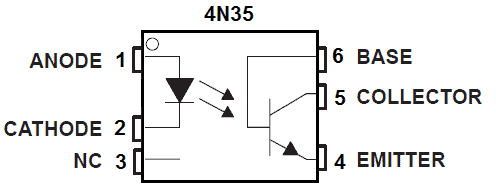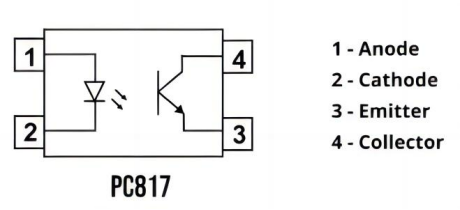
Optoisolators and Optocouplers are pivotal components in the electronics industry, particularly playing crucial roles in Logic ICs. This article delves into the definition, types, characteristics, advantages, and applications of Optoisolators and Optocouplers in the electronics component sector.
I. What are Optoisolators?
Optoisolators are devices that utilize optical principles for signal isolation. They consist of a Light Emitting Diode (LED) and a phototransistor, utilizing the light signal emitted by the LED to transmit the input signal, thus achieving input-output signal isolation.
II. What are Optocouplers?
Optocouplers represent a specialized type of Optoisolators, typically comprising an LED and a phototransistor (receiver). They achieve input-output signal isolation through optical coupling, offering enhanced isolation performance and response speed.
In general, an optocoupler, also known as photocoupler or opto-isolator, is a device which can transfer an electrical signal across two galvanically-isolated circuits by way of optical coupling.
III. Types
Optoisolators and Optocouplers come in various types depending on their working principles and application requirements. These include but are not limited to Photodiode, Phototransistor, and Optocoupler ICs.
IV. Characteristics & Advantages
· High Electrical Isolation: Optical isolation enhances circuit stability and reliability by isolating input and output signals.
· High-Speed Transmission: Fast transmission of light signals suits high-speed data transfer and digital signal isolation.
· Low Power Consumption: Optoisolators and Optocouplers typically exhibit low power consumption, aiding energy efficiency.
· High Temperature Resistance: Certain models boast excellent resistance to high temperatures, suitable for demanding operating environments.
V. Applications
Optoisolators and Optocouplers find extensive applications in various fields within the electronics industry:
· Industrial Control: Used for signal isolation and transmission in industrial automation systems to ensure stable operation. For instance, in systems like the Siemens S7-1200 PLC, they isolate and transmit sensor signals and actuator control signals.
· Communication Equipment: Employed for signal isolation and amplification in fiber optic communication systems to enhance reliability and interference resistance. For example, in devices like the Cisco Catalyst switches, Optocouplers isolate and amplify input-output signals for stable data transmission.
· Medical Equipment: Utilized for signal isolation and control in medical devices to ensure safety and stability. For instance, in devices like the Philips IntelliVue monitors, Optocouplers isolate and amplify physiological signals such as ECG and SpO2 for accurate monitoring.
VI. 4N35 & PC817
Two common Optoisolators and Optocouplers are 4N35 and PC817, both based on optical principles for signal isolation and transmission.
· 4N35: A common Optoisolator comprising an LED and a phototransistor. It features single-channel, high electrical isolation, and high-speed transmission, widely used in various digital circuits.

· PC817: Another common Optocoupler similar to 4N35, featuring a dual-channel structure for enhanced isolation performance and response speed. It is suitable for both analog and digital signal isolation, renowned for its reliability and low power consumption.

VII. Conclusion
Optoisolators and Optocouplers play indispensable roles in the electronics industry, especially in Logic ICs. Their characteristics such as high-speed isolation and electrical isolation make them crucial components in ensuring the stable operation of circuits across various electronic devices.




